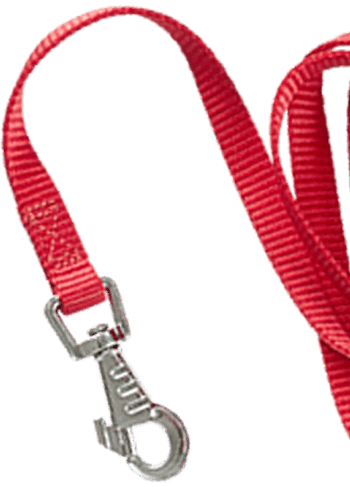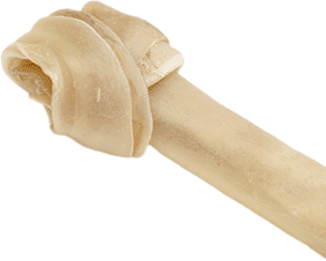



Many English Labrador dog breeders are selling cute puppies, but it’s increasingly hard to figure out which place is an excellent breeder to purchase a dog. It’s all too common to find puppies that are poorly bred, leading to health complications later in life.
One such health complication is hip or elbow dysplasia. When looking for a new English Labrador puppy, you should look for parentage with extensive testing in this area, as the tests make sure that bad genetics do not get passed on to their offspring.
This article will explain all about elbow and hip dysplasia, what testing you should be looking for, and why English Labradors, in particular, should be tested. Let’s get started!
Elbow and Hip Dysplasia are common orthopedic problems seen in English Labradors and other large or giant breed dogs. Both of these conditions are usually inherited but can be due to poor nutrition, being overweight, or inadequate amounts of exercise.
Elbow dysplasia is the abnormal growth development of the cartilage and bone in the elbow. This can lead to the elbow becoming displaced or out of the socket, which can further cause the elbow joint to develop abnormally leading to a life of pain, inflammation, and arthritis in the elbow.
This condition is caused by one of three different problems:
Dogs with elbow dysplasia may have no outward signs at all but can be so severe that they are not putting any weight on their leg. There are many treatment options to help decrease the pain and inflammation if your dog does develop elbow dysplasia, but you may not notice for some time.
Hip dysplasia is a painful condition caused by abnormal development of the hip joints. A dog has hip dysplasia when the socket in the pelvis is not deep enough for the ball of the femur to stay in place.
Since the hip joint is a ball and socket joint, a shallow hip joint causes the ball to continually come in and out of place, causing looseness and instability. When the femur rubs on the pelvis while moving in the socket of the pelvis, this causes arthritis. This arthritis can be very painful.
Dogs with hip dysplasia will have trouble walking around normally. This can put extra stress on their knees and ankles, leading to even more orthopedic problems. While there are treatments to make this less painful, there is nothing that can reverse this condition. Luckily, there are a few other options to make this condition less painful for your pup, like specialized beds and cushions to sleep on.
Elbow and Hip Dysplasia testing can be done on your English Labrador to see if they have the potential for developing either condition. The Orthopedic Foundation for Animals (OFA), along with your veterinarian, can use radiographs of the hips to help determine if your dog is predisposed for hip dysplasia.
English Labradors who do have hip or elbow dysplasia should not be used as a breeding dog, since these genetic diseases that are passed from parents to offspring
For a dog to be tested for elbow and hip dysplasia, they will need to see a veterinarian. Not all veterinarians test for this disease though, so call your veterinarian and make sure that they can test your English Labrador for hip and elbow dysplasia.
Be aware: your dog will have to be sedated to get the perfect radiographs for submission. Particular views have to be taken of the hips and elbows, and to take these radiographs your dog will need to be perfectly still.
Once taken, the radiographs will be sent off to for boarded radiologists to review. It can take a few weeks for the radiologist to review the x-rays and get you the results.
Dogs under 2 years of age can only be given a preliminary screen. They cannot get their full certification until they are 2 years old. Once your dog reaches 2 years of age, you can take them to your veterinarian for the full test certification.
The hips will be graded as excellent, good, fair, borderline, mild, moderate, and severe. Those that receive an excellent, good, and fair rating will pass OFA hip certification and receive a certification number.
Elbow dysplasia testing is done similar to hip dysplasia, where 4 different radiographs of the elbows are submitted to a radiologist. Just like with hip dysplasia, dogs cannot get their full certification until after they are 2 years of age. Elbow dysplasia is graded as normal or abnormal, with abnormal being broken down into 3 different grades:
Only those who have a normal elbow will pass certification and should be used for breeding.
Elbow and hip dysplasia testing make sure that the breeding parents do not display characteristics that would predispose them to hip or elbow dysplasia. If the parents have these unwanted traits, your new English Labrador puppy may also have these traits which could lead to hip or elbow dysplasia.
When looking for a breeder for your new puppy, make sure to ask about genetic testing to make sure that the puppy you get is going to be healthy and happy.
It is best to find a puppy whose parents have elbow and hip dysplasia certification from OFA. This will help guarantee that your new English Labrador puppy will have good genetics.
If you get a puppy from a breeder without elbow and hip dysplasia testing done, there is a possibility that your dog could end up with one of these diseases. These diseases could mean costly veterinary visits and surgeries to make your English Labrador no longer in severe pain.
When looking for a new English Labrador puppy, make sure that the breed has done everything possible to only breed dogs with the best genetics. Making sure that the parent’s elbows and hips have been tested by OFA and have excellent scores.
If you are looking for an English Lab breeder, we invite you to consider a puppy from Snowy Pines. Our white English Labradors have pure bloodlines, are tested before breeding, and live happy, adventurous lives on our property. We’d love for you to join our family too!